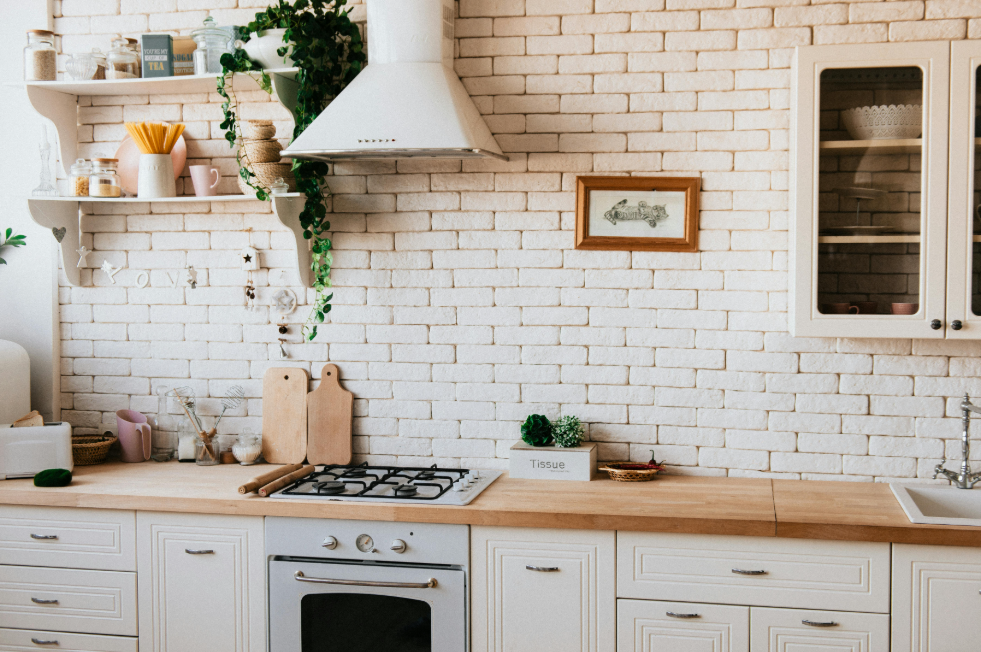Transforming Desert Kitchens: The Ultimate Guide to Modern, Climate-Friendly Kitchen Remodeling in Phoenix

Phoenix’s desert climate presents unique challenges for homeowners considering kitchen remodeling, with extreme heat, dry air, and frequent dust storms necessitating specific design choices. By carefully selecting the right materials, appliances, and layout, Phoenix residents can transform their kitchens into refreshing, eco-friendly oases that withstand the desert’s tough conditions, making their homes more comfortable and efficient year-round. Let’s explore how you can reimagine your kitchen with a focus on sustainability and climate adaptability, helping your home stay cool and efficient year-round.
Energy-Efficient Appliances: A Foundation for Sustainable Kitchens
In desert climates such as Phoenix, appliances play a significant role in determining energy costs and kitchen comfort. By switching to Energy Star-rated appliances, homeowners can reduce energy consumption and minimize heat emissions. Research from the U.S. Department of Energy shows that Energy Star-certified refrigerators consume 15% less energy than conventional models, and energy-efficient dishwashers can save up to 5,000 gallons of water per year—an essential consideration in a city such as Phoenix where water conservation is a priority.
Smart, connected appliances are gaining popularity as they offer remote control features and monitor energy usage in real-time. Some models even optimize their energy use based on off-peak electricity rates, making them an ideal choice for eco-conscious homeowners. For Phoenix residents, choosing appliances designed to operate effectively in high temperatures and dry environments is also important. Heat-tolerant and energy-efficient appliances not only contribute to a comfortable kitchen environment but also align with the city’s growing sustainability goals.
Choosing Heat-Resistant and Durable Materials
Materials that can withstand extreme temperatures and resist wear from sand and dust are crucial in a desert kitchen. Many traditional materials, such as wood, can warp and degrade quickly under the intense heat of Phoenix summers. Instead, opting for materials such as quartz, stainless steel, and concrete can provide long-lasting durability without compromising style.
Quartz countertops are popular for their heat-resistant properties and low maintenance needs. Unlike natural stone, quartz doesn’t require sealing and is more resilient against stains, scratches, and heat, making it perfect for a desert climate. Additionally, stainless steel offers a sleek, modern look while resisting heat and dust accumulation. Concrete, a more affordable option, is increasingly being used in countertops and flooring due to its durability and thermal properties, keeping kitchens cooler in the summer months.
Smart Ventilation Systems to Combat Desert Heat
Proper ventilation is key in a desert kitchen, as it helps expel heat generated by cooking and reduces the buildup of dust and particles common in Phoenix’s air. A modern ventilation system should include high-quality range hoods and strategically placed vents to ensure effective air circulation. Many new range hood models are equipped with sensors that automatically adjust fan speeds based on cooking intensity and detect air quality levels, providing a responsive, hands-off approach to managing kitchen heat and air quality.
Another effective ventilation approach is to incorporate a heat recovery ventilation (HRV) system, which recycles indoor air while reducing energy loss. This can lower cooling costs in the kitchen, an area that often traps heat. Research suggests that HRV systems can improve indoor air quality by up to 90%, reducing allergens and other airborne contaminants, which is essential in a city prone to dust storms and high pollen levels. By installing an HRV, homeowners in Phoenix can enhance air circulation and comfort in their kitchens, all while promoting energy efficiency.
Optimizing Layout and Design for Desert Efficiency
The layout of a kitchen in a desert climate should be designed with efficiency and cooling in mind. Traditional open-concept designs can contribute to heat accumulation by allowing hot air to circulate freely between rooms. Instead, homeowners may consider a semi-open layout that includes partial barriers or screens to contain kitchen heat without isolating it from the rest of the home.
Additionally, positioning appliances such as stoves and ovens away from windows can prevent additional heat gain from direct sunlight. The placement of cabinets and counters can also make a difference; using lighter-colored finishes can reflect rather than absorb heat, maintaining a cooler ambiance. A study by the American Society of Heating, Refrigerating and Air-Conditioning Engineers (ASHRAE) shows that strategic kitchen layouts can reduce overall cooling needs in hot climates by up to 15%, making thoughtful design an essential element of any Phoenix kitchen remodel.
Cooling and Insulation Solutions for a Refreshing Kitchen Environment
Cooling and insulation are critical in desert kitchen design. While traditional air conditioning systems can be effective, they are also energy-intensive. In Phoenix, where temperatures can exceed 100°F, combining insulation solutions with alternative cooling methods can help maintain kitchen comfort without skyrocketing energy bills. Installing ceiling fans with reversible airflow is one simple yet effective option for increasing airflow and cooling in kitchens.
Investing in double-glazed windows can also help maintain temperature stability by preventing hot outdoor air from seeping inside. Insulating walls with reflective materials can further reduce heat absorption, ensuring the kitchen remains cool and comfortable. Solar shades or UV-blocking window treatments can be added to reduce solar heat gain, and they are particularly effective for windows facing west. Studies show that reflective insulation can decrease heat transfer by up to 25%, which is a meaningful improvement in a desert kitchen that constantly faces intense sunlight.
Water-Saving Fixtures and Systems for Sustainable Kitchens
With water scarcity being a key concern in Phoenix, incorporating water-saving fixtures into a kitchen remodel is essential. Low-flow faucets and aerators can significantly reduce water usage without impacting functionality. According to the Environmental Protection Agency (EPA), installing water-saving fixtures can reduce water consumption by up to 30%, a crucial benefit in water-restricted areas.
For those looking to go a step further, greywater recycling systems can be installed to repurpose water from sinks for other household uses, such as watering plants or cleaning outdoor spaces. While greywater systems are more common in outdoor landscaping, they are gaining traction in desert kitchens as more homeowners recognize the importance of water conservation.
Integrating Solar Energy for a Self-Sufficient Kitchen
Phoenix receives approximately 300 sunny days each year, making it ideal for homeowners interested in integrating solar power into their kitchen remodels. Solar panels can reduce reliance on the local grid, lowering energy bills and providing a sustainable source of power for kitchen appliances. According to the Solar Energy Industries Association, Arizona ranks fifth in the U.S. for installed solar capacity, with residential solar installations becoming increasingly popular due to their long-term cost-saving potential.
For Phoenix homeowners, solar panels can power essential kitchen systems, such as lighting, ventilation, and even appliances. In some cases, battery storage solutions can store solar energy for nighttime use, creating a truly self-sufficient energy source. Additionally, Arizona offers various incentives for solar installations, which can offset upfront costs and make it easier for homeowners to adopt renewable energy solutions.
Conclusion
Remodeling a kitchen in Phoenix’s desert climate demands a focus on energy efficiency, durability, and water conservation to ensure comfort and functionality year-round. By choosing energy-efficient appliances, heat-resistant materials, advanced ventilation, and sustainable cooling solutions, homeowners can create kitchens that thrive in extreme temperatures. Water-saving fixtures and renewable energy additions such as solar panels further enhance eco-friendliness, aligning with the unique needs of desert living. Embracing climate-conscious design not only increases home value but also contributes to a sustainable future, transforming kitchens into beautiful, inviting spaces resilient to Phoenix’s challenging environment.








